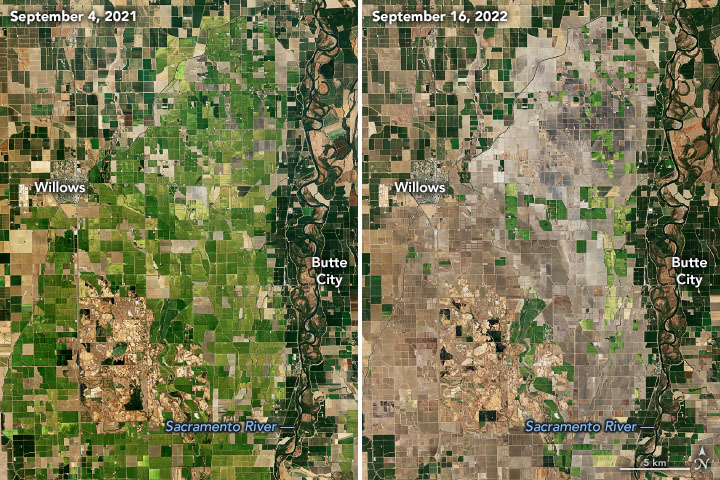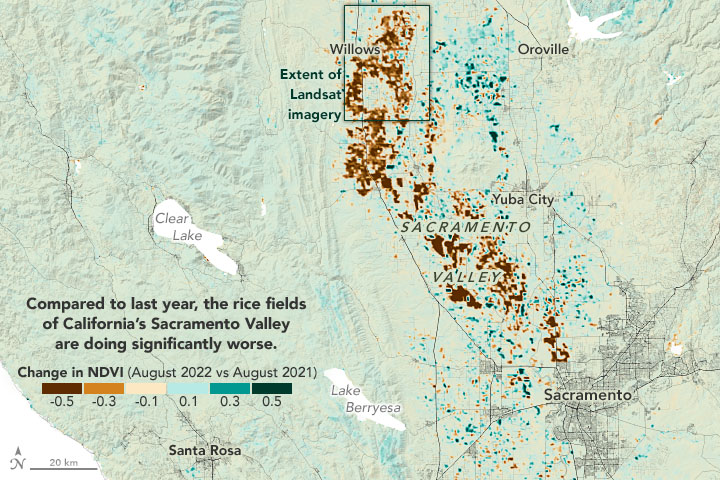



The Sacramento Valley is normally the largest rice-growing region in California, producing hundreds of millions of dollars worth of rice each year. However, 2022 has been anything but normal. Drought and water shortages have meant rice growers have only planted half as much of the grain as usual.
The scale of the change is visible from space. The right side of the image pair above shows a major rice-producing area east of Willows on September 16, 2022; the left side shows the same area on September 4, 2021. Tens of thousands of acres of farmland that would normally be green as farmers prepare for harvest were instead brown and idle in 2022. Both natural-color satellite images were acquired by the Operational Land Imager (OLI) on Landsat 8.
The changes were most pronounced in Colusa and Glenn counties (the western part of the valley), where rice acreage dropped by 84 and 75 percent in 2022 compared to 2021, according to UC Davis agricultural economist Aaron Smith. Farther to the east, in Butte County, rice acreage was down by 17 percent. Farmers in that county had more groundwater to tap and so were less affected by reduced water allocations from the Central Valley Water Project.
The map below depicts anomalies in the Normalized Difference Vegetation Index (NDVI), a measure of how plants absorb visible light and reflect infrared light. Drought-stressed vegetation reflects more visible light and less infrared than healthy green vegetation, and this can be detected by satellites. This NDVI anomaly map, based on data from Terra MODIS, compares the health of vegetation in August 2022 versus the same period from 2000-2010. Brown areas show where plant health or “greenness” was below normal; greens indicate vegetation that is more widespread and abundant than normal. The chart below shows how unusual the NDVI measurements were in an area east of Willows since 2000.

While a burst of late-September rain offered some short-term relief for farmers, it will take significantly more wet weather for drought conditions to ease. Over 40 percent of California remained in extreme drought and 17 percent faced exceptional drought on September 27, the U.S. Drought Monitor reported. Most of the Sacramento Valley was classified as experiencing extreme drought.
The USDA expects the California rice crop will be reduced by 38 percent this year. That would make this year’s crop the smallest since 1977. Most California rice is short or medium-grain rice for use in dishes such as sushi, paella, and risotto. Other US states, especially Arkansas, produce most of the long-grain rice, such as basmati or jasmine rice.
NASA Earth Observatory images by Joshua Stevens, using Landsat data from the U.S. Geological Survey and data from the Level-1 and Atmosphere Archive & Distribution System (LAADS) and Land Atmosphere Near real-time Capability for EOS (LANCE). Story by Adam Voiland.